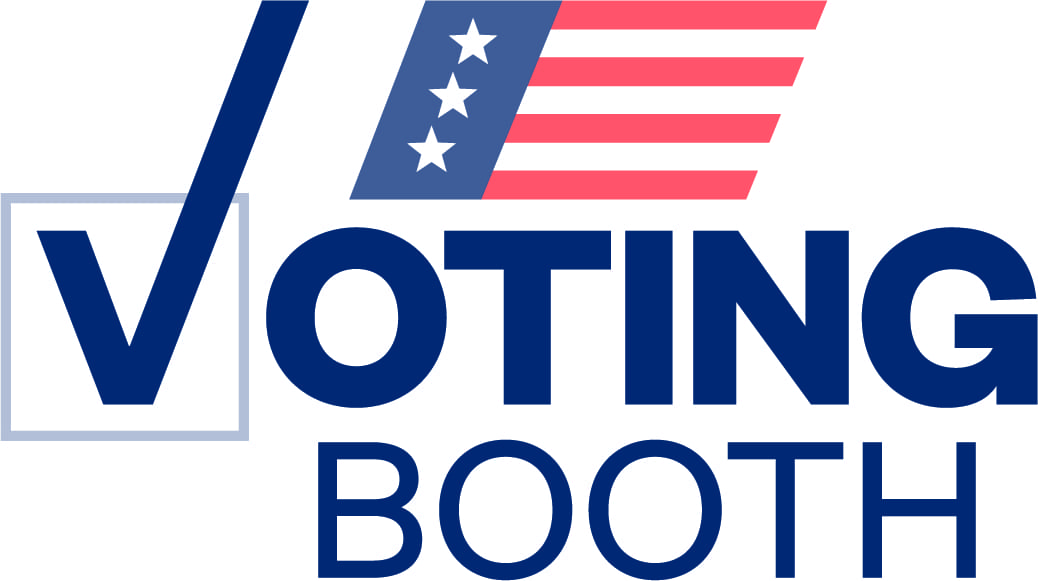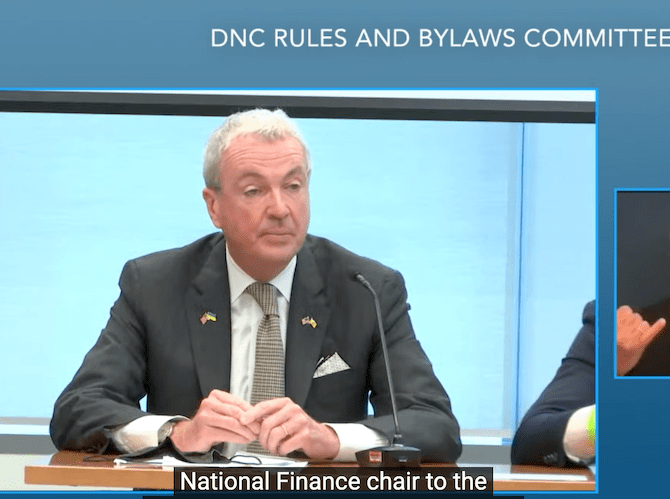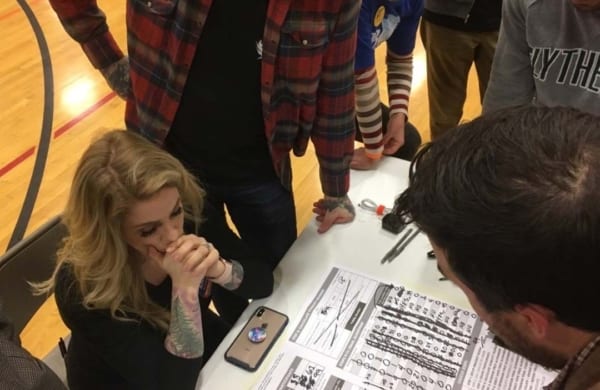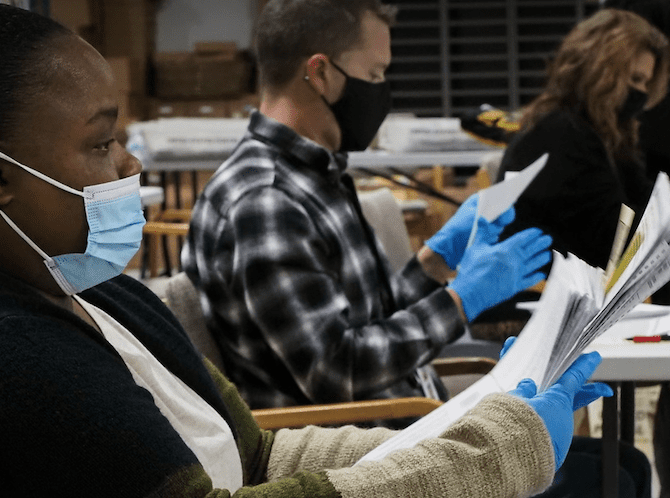Scholars Unmask Trump Election Lawyers’ Use of Falsified Evidence
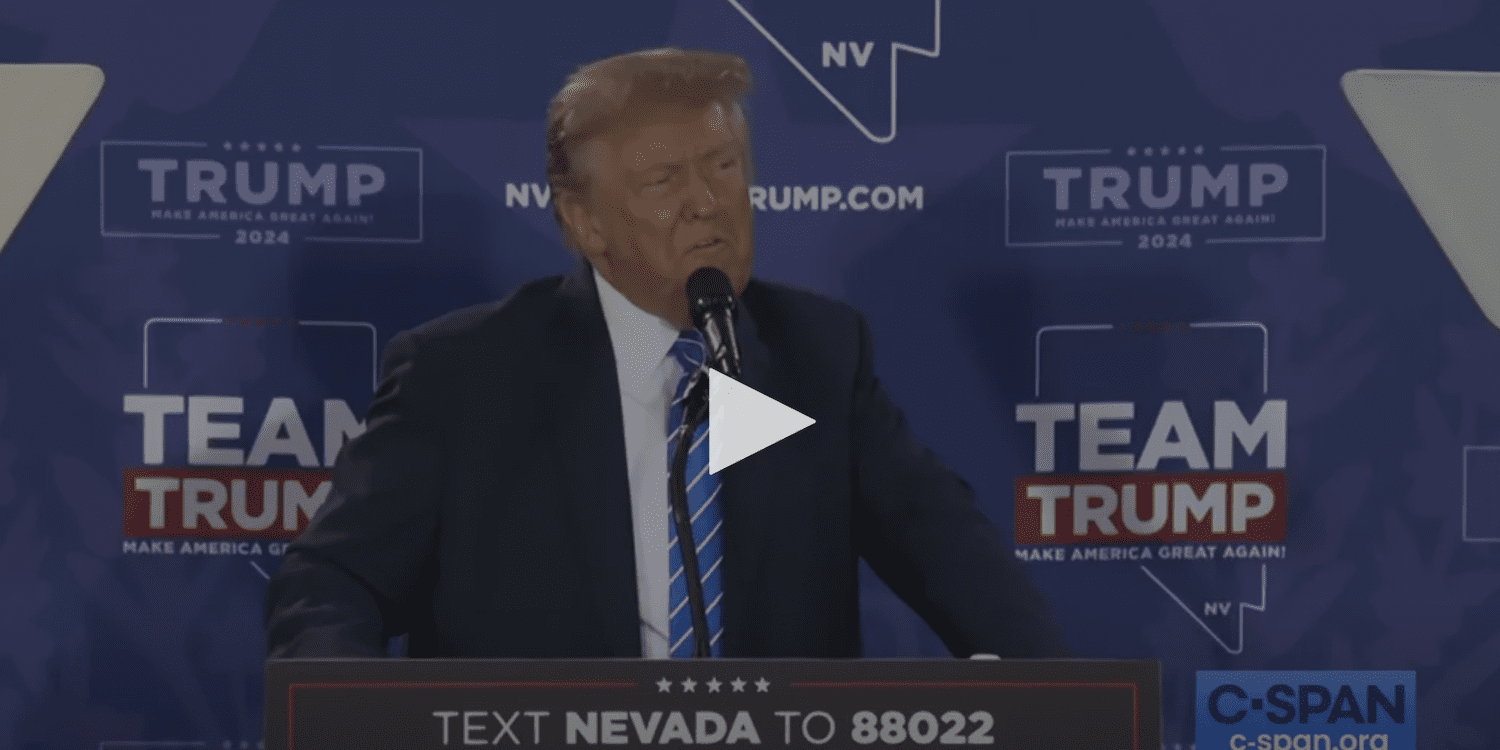
(Former President Donald Trump campaigns in Las Vegas on January 27. Image via c-span.org.)
After 2022’s midterm election, I had an email exchange with Robert Beadles, a combative northern Nevada businessman and Donald Trump devotee. His post-2020 hounding of Reno’s top election official had pushed her to resign. Beadles didn’t trust the midterm results either and offered a $50,000 reward to anyone who’d prove that it was not stolen.
Easy money, right? Beadles’ distrust was tribal. But his reward hinged on refuting a statistical analysis that he waved like the flag. His statistician, Edward Solomon, who lived halfway across the country, found mathematical aberrations in the results that he didn’t like. The men claimed that was proof enough that the announced election results were dishonest.
I, and several experienced analysts — a math PhD, a computer scientist, and an election auditor who had spent years studying election systems, voting data, and procedures — tried to explain why the statistics, alone, did not prove anything. We politely told him what records to obtain, why they mattered, what methodologies to use. Beadles didn’t care and soon lashed out.
“Reading this is like walking into a crime scene where a victim is clearly dead and clearly shot in the head,” Beadles wrote. “Then you come along and try to say everything you can to say we’re wrong because we don’t show the video of the murderer doing it, so you conclude there’s no murder or death until you see exactly how it happened, not that it did.”
Beadles’ reward wasn’t real. Nor was his purported evidence. But this stunt, and especially its use of irrelevant statistics to appear authoritative and smear elections, is common in Trump circles. A working paper by two Stanford University scholars, the Hoover Institution’s Justin Grimmer and the Democracy and Polarization Lab’s Abhinav Ramaswamy, underscores just how widespread these fabrications are. They are not just cooked up for propagandizing in the press. These bundles of bogus claims, erroneous assumptions, and alleged evidence — especially statistics like those cited by Beadles — were also centerpieces in scores of lawsuits to push judges to overturn the last presidential election. It was all hype, smoke and mirrors.
“Regardless of the reason why, every claim we analyze fails to provide evidence of illegality or fraud,” the scholars wrote near the start of their comprehensive 85-page paper. “We document that the supposed evidence of fraud that Trump relies upon is riddled with basic statistical misunderstandings and errors, confusion about how to use voter files or absentee voter history to analyze turnout and registration, and invented statistical techniques based on the impressions of what happens in a ‘normal’ election from ‘experts’ who never previously analyzed election data and provide no argument to justify their procedures. At no point did Trump or his allies present even remotely plausible evidence of consequential fraud or illegality.”
Page after page of the scholars’ paper ripped apart the assertions that Trump made while objecting to 2020’s results — and has kept making. But the most intriguing thing about their work is not its takedowns of argumentative emotional assertions from people who could not accept that Trump lost — such as saying it’s impossible that Joe Biden did better than Hillary Clinton in battleground states.
What is most interesting is how the scholars pull back the curtain on a small cadre of conflict profiteers: those who used home-brewed statistics to fan dubious and deceitful claims, and all the while proclaimed that they were election experts. And how Trump’s lawyers went to court with the cooked-up evidence that, upon peer-reviewed examination, was repeatedly found to be based on lies, flawed data and sketchy methodologies made up on the fly.
Atop of this house of cards was Trump, who, after all, is a masterful storyteller. He simplifies, exaggerates, fantasizes, and feigns surprise, outrage, menace — all to play the crowd. Among his acolytes is a cadre of ambitious people who take his cues to fabricate scientific-looking analyses to back him up — and grab the spotlight themselves.
As the paper underscores, Trump is the ringmaster. But the grifters and conflict profiteers have his back. Here’s an example cited by the scholars. One month after the November 2020 election, Georgia recounted its presidential ballots. As that was about to begin, Trump visited the state and gave a speech. At one point, he offered this twisted explanation:
“President Obama beat Biden all over the country, except in some of the swing states where Biden beat him badly. How does that work? And they say it’s statistically impossible. He beat crooked Hillary. Think of this. He beat crooked Hillary in the swing states, but she beat him everywhere else.”
Grimmer and Ramaswamy took apart this tirade, writing, “Trump never explains who declared this to be statistically impossible or who told him about what vote total targets to hit to guarantee victory. Nor does he point to concrete evidence that Joe Biden outperformed Barack Obama and Hillary Clinton in only the swing states or a report that makes that claim. One reason for the lack of citation might be that this claim is completely false.”
Nonetheless, Trump kept repeating this nonsense — nonsense because it is not based on facts. And, crucially, voter turnout patterns in another presidential election are irrelevant to his loss; how people factually voted is what matters. But, as the paper notes, a handful of publicity-hungry loyalists eagerly cooked up serious-sounding but irrelevant statistics to attest to this lie.
In many respects, my encounter with Beadles — who is not in the scholars’ paper — shows this playbook is still in use. I urged Beadles to look at the bullseye — compare the ballots, their votes and the overall results — instead of relying on a single arcane analysis. He replied, “Demonstrate to us how one can determine the alpha percentage with only the g and h percentages, with no knowledge of the Omega or Lambda percentages. Now if you’re not contesting the ‘math’ we have nothing further to discuss.”
Apparently not. There are dozens of examples of specious arguments and accompanying bombast like this in the scholars’ paper. They are all variations on partisan clichés of illegal voters, fake ballots, corrupt officials and hacked counts. As their paper’s abstract notes:
“Trump’s claims of fraud or illegality are riddled with errors, hampered by misunderstandings about how to analyze official voter records, and filled with confusion about basic statistical techniques and concepts. Often, the claims are based on the casual impressions of what happens in a ‘normal’ election based on little more than intuitions. Worse yet, several claims are simply misstated by Trump’s legal team or Trump. As a result, sometimes the public claims do not even match the weak evidence in Trump’s legal challenges.”
It’s no surprise that Trump’s post-2020 lawyers did not win a single election-centered ruling. The pleadings were a made-up mess. Grimmer and Ramaswamy hope their cataloging of dubious claims serves as “a guide to anticipating potential objections in future elections.”
But unmasking elements of the election grifter business model doesn’t make it go away. The scholars anticipated Beadles’ claims and impenetrable statistics about Nevada’s 2022 midterms. As 2024 begins, he was at it again, offering a reward and harassing Reno’s new election manager.
Beadles’ post, ironically published on the same day as the scholarly paper, began: “I’m not going to waste your time showing you numbers, videos, etc., that show our elections are being stolen and how there’s $80,000 to prove me wrong.”
The propaganda machine keeps churning. But thanks to the scholars, its special tools and methods are clear for all to see.

